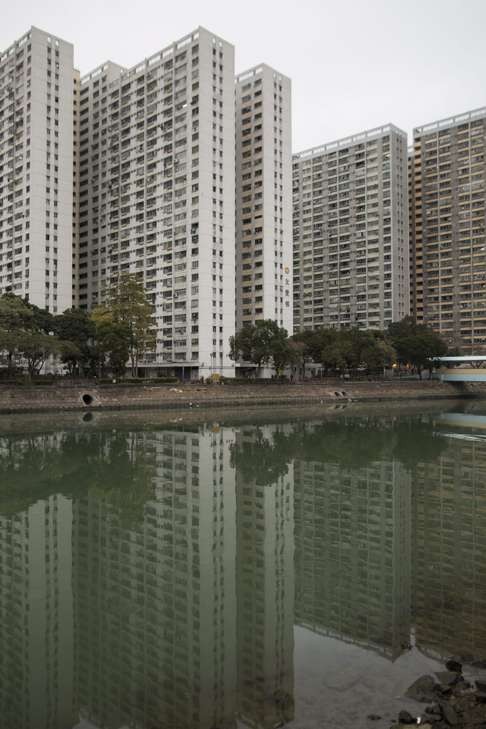
Innovative solutions needed for HK’s land, housing woes
New sources of land supply are clearly required to reduce the current limitations on housing choices in the city
Understandably land supply and housing appear to be two of the main topics which contenders need to tackle to secure both Election Committee and public support in next month’s Chief Executive election. Potential suggestions and solutions will no doubt abound but in the final analysis any successful package of policies and measures will need to respond to some fundamental challenges as to what to provide, how and for whom.
The “how” is probably the biggest hurdle to overcome in that the reality is that from a land perspective we need to look at a combination of brownfield, greenfield, reclamation, rezoning and regeneration solutions – in other words there is no easy answer as we need to optimise the use of a relatively scarce resource. The “how”, however, inevitably involves choices which are difficult to resolve at times and there are different views among the community as to what should go where, and in the worst cases an unwillingness to accept that any new development should be permitted albeit appropriate sites are available. Clearly, given the obvious demand for new homes, there is a need for a meaningful public debate involving all sectors of society to establish acceptable priorities of land use in the territory but the present process of structured engagement, with its consensus formula, is unlikely to provide the answers. This raises the whole issue of public participation going forward and the possibility of creating a truly independent agency to act as the interface between the government and whole range of stakeholders that need to be involved.
How also do we solicit from the administration what might be regarded as a register of all potential sites for the purpose of discussion with the community, with time frames, cost implications, planning issues and land lease considerations so as to enable an informed debate on priorities, availability and alternatives? What mechanisms do we or should we have to compensate or mitigate the loss of public realm for use for housing purposes? Similarly, will the next administration be willing to address the prescriptive and inflexible nature of much of our present building and planning regulatory environment and will there be the will to encourage the exercise of discretion by government officials so as to facilitate a smoother and quicker delivery process?
If we move to “what”, there are obviously many issues surrounding the current availability of both public and private residential supply, ranging from the unacceptable length of the waiting list for public housing, to an absence of mobility within the Housing Authority portfolio, to the reluctance of existing Home Ownership Scheme (HOS) owners to dispose of their units, to an absence of product for those whose income exceeds HOS limits but have no hope of purchasing a private flat in the open market, to an unacceptable situation where affordability is driving down the size of unit to an untenable level.
All these issues need to be addressed in a comprehensive manner together with serious debate amongst the community regarding the ultimate size of the public rental portfolio, whether the emphasis in terms of the 25,000 “public” units to be produced annually over the next ten years should be on ownership rather than rental and whether we should essentially cap the public rental stock at say 900,000 units coupled with a more active strategy to encourage those who can afford to do so to take the first step on the house purchase ladder. Provision of housing for the elderly, singletons and students also requires careful thought in terms of both design and spacial allocation as does how we are going to create communities rather than single category estates.

In addition, when we consider how to fill what is a clear gap, in fact more akin to a chasm, between HOS and the private sector, should we not be looking to the development community as a provider of affordable social housing which is a model that has been adopted in many other international cities? Granted it will mean less land revenue but this is all about providing housing, not about filling the government’s coffers. The government has the mechanism through land sales, lease modifications and the grant of planning consent materially to influence the content of residential development projects for the benefit of the community – will there be the will to use them?
As for “whom” the reality is that we need to offer a range of public and private housing options which responds to the different needs of all sectors of society and that a ladder with clear rungs exists for those who aspire over time to provide a better home for themselves and their family. Albeit the unsatisfactory waiting time, we have a sizable public rental pool, we have the first rung into the ownership world with HOS (albeit materially undersupplied) but then we have a serious gap for those seeking to make their initial purchase in the private sector or move from HOS to private housing. Faced with these challenges, in the past the administration created an intermediate stage through the “sandwich class” housing scheme and perhaps this is another area where the development community could play a role as we seek to provide a further essential, but currently missing, rung on the housing ladder.
At the end of the day, new sources of land supply are clearly required to reduce the current limitations on housing choice and hopefully over time such increase in supply will at minimum contain prices and reduce pressure on affordability. However, in order for the model to be fully sustainable, future provision needs to be comprehensive in nature and supplemented by innovative new funding and financial arrangements.
Nicholas Brooke is chairman Professional Property Services

